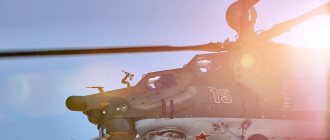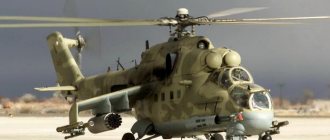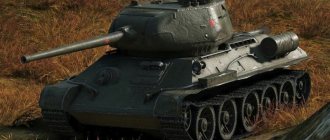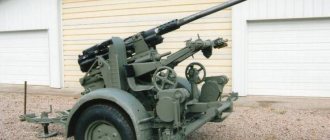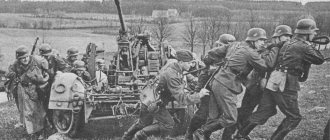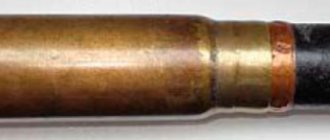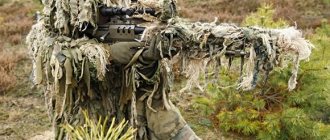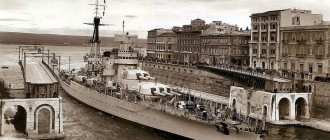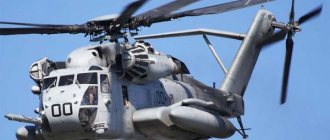In February 1954, at Kadena Air Force Base, Okinawa, one of the most famous American pilots, Chuck Yeager, tested a MiG-15 that was hijacked by North Korean pilot Kim Sok Ho for $100,000. During the tests, a funny incident occurred between him and two pilots of the F-86 Saber fighter, which was used as an escort aircraft. One of the pilots asked Chuck why there was no dogfight between the MiG and the F-86? To which I received the answer that the result of the battle depended more on the pilot than on the characteristics of the aircraft. The lieutenant colonel had the courage to disagree. Then Chuck invited him to pilot the Mig in a duel with the Saber. He agreed. After takeoff, Yeager easily entered the MiG’s “tail” and did not let go until landing, after which the pilots swapped planes. Everything happened again, Chuck in the MiG mercilessly “polished the tail” of the F-86. During the debriefing, the lieutenant colonel looked very confused. “I never thought that so much depends on the pilot,” he said. Jaeger replied with a smile: “A more experienced pilot will always clean up your tail, no matter what you fly - it’s as simple as that.”
All other things being equal, in a real battle much is decided by chance and not so much by the characteristics inherent in military equipment, but by its skillful use.
There are different opinions about which helicopter is better - the Russian Mi-28 or the American AH-64. Their comparison, in our opinion, must be carried out taking into account the fact that 2014 marked the 70th anniversary of the use of helicopters in armed warfare and that both helicopters are currently the crown of evolution of mass-produced second-generation combat helicopters, each in their own country.
US Army Air Forces 2nd Lt. Carter Harman (far left) and his YR-4B in Burma
Based on the fact that 7 years passed between the first flights of the prototypes of these machines, it is also necessary to take into account historical events and many other factors when making comparisons. Well, which helicopter is better or worse, “because...” or “despite the fact that...”, you be the judge.
First combat experience
By 1944, the United States took the leading role in the global helicopter industry. Conducting military tests of Sikorsky YR-4A* helicopters during combat operations in Burma marked the beginning of the use of helicopters in armed struggle as ambulances, communications vehicles, reconnaissance vehicles and artillery fire spotters. The military had a low opinion of them. One general in 1948 described the flight of a helicopter as trying to lift himself by his bootlaces, and said that it was no good as a flying machine.
The main arguments against were: high fuel consumption, difficulties in maintenance, more difficult piloting and lower reliability relative to aircraft, as well as the supposed high vulnerability to air defense systems.
About the power plant
"Apache" is equipped with a T700-GE-701 engine, the power of which is 1695 hp. With. The “turntable” is provided with two high-pressure fuel pumps, which are placed in special nacelles on both sides of the fuselage. The helicopter is equipped with two protected tanks, the total capacity of which is 1157 liters. The tanks are located behind the pilot's seat and behind the gearbox. In addition, fuel tanks (4 pcs.) can be additionally attached to wing units equipped with weapon suspensions. The capacity of one tank is 870 l.
Korea
However, helicopter operations in Korea have shown their significant and often decisive role in tactical airlift and supply of troops, with a low level of losses. During the first year of the war, only one helicopter was lost, despite intense shelling. But even this did not change the attitude of most generals towards helicopters. And only the command of the US Marine Corps, which bore the brunt of the fighting in Korea, spoke of the urgent need for helicopters, both air assault and transport. The Chief of Staff of the Marine Corps, General L. Shepherd, stated: “The helicopter is receiving extremely favorable treatment in Korea... We must spare no effort to get as many helicopters as possible to the front... giving them priority in relation to * Y - Prototype - a prototype. A prototype aircraft built in limited numbers to develop the design's potential capabilities. any other weapon..." Thanks to the Marines, skeptics from other branches of the armed forces have turned into the most ardent supporters of helicopters. Brigadier General K. Jerome, in a report to the command on September 12, 1950, demanded: “... helicopters, more helicopters, as many helicopters as possible to Korea.” The helicopter war received another impetus in August 1951 after the use of the N-19 helicopter, which could carry up to 10 people and was highly reliable and efficient. Thanks to him, it was concluded that it was possible to use helicopters to change the entire course of ground combat operations. The term “landing assault helicopter” more accurately described the use of helicopters by the Marine Corps for landing tactical landings directly on the battlefield. To give helicopters assault functions, they began to be equipped with machine guns and unguided aircraft missiles (UAR). And a couple of light N-13s were even equipped with recoilless rifles for experimental purposes. In the summer of 1952, HRS-1 (H-19D) helicopters equipped with NAR took part in direct fire support for troops.
What is the American helicopter equipped with?
The AN-64 is equipped with powerful electronic equipment. Flight crew training takes place on a special simulator. The Apache helicopter is equipped with a TADS system, which provides detection and target designation, and represents the main combat power of the helicopter. In addition, for the helicopter, American military designers developed the PNVS night vision system and the INADSS integrated helmet-mounted system, with the help of which small arms and missiles are activated by turning the head. The main system is equipped with a laser pointer-rangefinder. The ability to track terrain to avoid detection by the enemy during combat missions has become available thanks to the more advanced FLIR-PNVS system.
Asian transit Korea–Vietnam
The French took over the baton from the Americans and contributed to the development of armed helicopters. In the Algerian War (1954–1962), they installed two machine guns on the sides and 36 NARs with a caliber of 68 mm on N-21 transport helicopters purchased from the United States. Subsequently, 68-mm missiles were replaced by 37-mm, increasing their number to 72. Several N-21s were armed with 20-mm automatic cannons. The commander of squadron 31F of the French Navy, Lieutenant I. Babot, found a unique application for holders of external fuel tanks (PTB). He hung five 250-pound bombs on them, and mounted a bomber sight in the cockpit, turning the helicopter into a bomber. By January 1958, four N-21s were shot down by ground fire. The question arose about the armoring and protection of fuel tanks (TF). The armor was considered inappropriate due to the reduced payload weight, but protected tanks were installed, and the pilots received body armor. As a result, minimal losses - one shot down per 9,250 flight hours.
In 1959, new N-34 transport helicopters arrived in Algeria. They began to install a movable heavy machine gun or a 20-mm cannon in their doorway, and six 127-mm missiles on the side brackets.
A 12.7 mm Browning machine gun and a 20 mm MG-151 cannon are installed in the openings of the French H-34
In 1958–1959, anti-tank guided missiles (ATGMs) were used for the first time from a helicopter. The N-34 was equipped with two heavy SS-10 ATGMs, and the Allouette II was equipped with two lighter SS-11s. Tests have shown their sufficient effectiveness.
Light N-13 with machine guns and NAR
Having studied the experience of combat operations in Indochina and Africa, the United States concluded that it was necessary to create armed helicopters for escorting multi-purpose and transport helicopters, as well as direct support for ground troops.
French developments were taken as a basis. Thus, the N-13 received machine guns, light guided missiles and SS-10 ATGMs based on the Allouette II model, and on one of the N-21s, under the fuselage in the bow, a machine gun turret was installed to practice close air support techniques.
In 1958, the most powerful set of weapons was received by the JH-34A* * helicopters, which were equipped with four SS-10 ATGMs, forty 70-mm NARs, two 20-mm cannons, three large-caliber and six conventional machine guns.
This is how armed combat helicopters of the first generation appeared, i.e. serial models that were additionally armed during operation, such as N-13,21,25, 34.
Helicopter N-19 during testing at the time of firing the NAR
According to US Army estimates, escort helicopters were expected to have better maneuverability and 40% greater speed than their transport counterparts. Achieving such characteristics required a transition to gas turbine engines, which is considered a distinctive feature of second-generation helicopters. When developing them, we took into account the desire expressed during the Korean War to create vehicles optimized for the transportation of regular army units: a squad, platoon or combat group of Marines. In addition, already in 1960, the army wished to have a specialized high-speed combat helicopter armed with a turret-mounted guided machine gun and missiles.
About the cabin design
The Apache attack helicopter is equipped with a two-seater cabin, which is characterized by a tandem seat arrangement. The front one is intended for the second pilot-gunner, and the rear one, raised by 480 mm, is for the pilot. The lower part and sides of the cabin are covered with armor. The space between the seats became a place for a transparent partition. Kevlar and polyacrylate are used in its manufacture. This partition is capable of withstanding a direct hit from a bullet and projectile, the calibers of which vary from 12.7 to 23 mm. Thanks to this cabin design, the flight crew is provided with maximum protection.
In an effort to increase the combat survivability of the Apache helicopter, American designers in the helicopter use two independent hydraulic systems, protected fuel tanks and armored most important systems and areas.
The design of the Russian Ka-52 helicopter (according to NATO classification it is listed as “Alligator”) is characterized by a coaxial design. The cabin in this “turntable” is double. However, the seats are located side by side to each other. There are no restrictions for piloting in the Alligator. Thus, both pilots can fire and control the helicopter. The helicopter cabin is equipped with a special armored capsule. The crew can eject at an altitude of at least 4,100 m. The armored coating protects pilots from bullets of caliber no higher than 23 mm.
"Iroquois" - Progenitor of the world's first specialized attack helicopter
In fulfillment of the wishes expressed by the results of Korea, the US Army announced a competition for a multi-purpose helicopter with a gas turbine engine (GTE), optimized for the transportation of an army squad. The requirements included the possibility of arming it with missiles and machine guns. In 1955, the 204 model of the Bell Helicopter Company was selected, which later became the progenitor of the world's first specialized attack helicopter. The prototype of the famous "Hugh" - XH-40 flew on October 20, 1956 and received the designation HU-1 (since 1962 - UH-1) and the official name "Iroquois".
In Vietnam, on December 22, 1961, one of the 30 CH-21 transport helicopters supplying the Vietnamese was shot down by small arms fire. Two more helicopters were shot down on September 30, 1962. The helicopters, armed with a single 7.62 mm machine gun, which was clearly not enough to suppress anti-aircraft fire, needed to be escorted by their well-armed, more maneuverable counterparts. For these purposes, thirteen UH-1As were armed with two 7.62 mm machine guns and sixteen 70 mm caliber rocket launchers and sent to Vietnam.
Further - more: numerous modifications of the Iroquois received various weapons. The designers provided small pylons located in the lower part of the fuselage for hanging NAR units or containers with 7.62 mm machine guns; a machine gun turret was installed in the opening of the sliding side door.
The UH-1C variant, for the ILC, was equipped with a TAT-101 nose turret with two 7.62 mm M-60 machine guns.
Since November 1963, the UH-1E began to enter the troops, already armed with 4 x M60 and XM-157 units with seven NARs each. Modifications have appeared that are optimized for use in the dark, and helicopters with an automatic 40-mm XM-5 grenade launcher, as well as a version with two blocks of 24 70 mm caliber rocket launchers.
Light N-13 with SS-10 ATGM
Experiments were conducted on the use of the SS-11 ATGM with the UH-1. If two ATGMs were installed on the French Allouette II helicopter, then on the UH-1 three such missiles were installed on each side.
Some UH-1Cs received a 40 mm Thumper automatic grenade launcher, others received the M21 system, which included a 7.62 mm Minigun machine gun and XM-158 NAR units.
The UH-1C helicopter became the primary helicopter for fire support missions. At the same time, its shortcomings appeared: limited visibility for pilots, the cargo compartment was clearly superfluous, flight characteristics, especially flight speed, were insufficient. However, it was he who became the “father” of the first attack helicopter.
Armament AN-64 Apache
M230 aircraft cannon
— Caliber: 30×113 mm B — Length: 1.68 m — Weight: 57.5 kg — Rate of fire: 600–650 rounds per minute — Initial projectile speed: 805 m/s — Electric drive
Types of ammunition used: - cartridge with high-explosive fragmentation projectile M799, equipment: 43 g of explosive; - cartridge with armor-piercing cumulative projectile M789 with armor penetration of about 51 mm of homogeneous armor
Rockets
— Air-to-surface missiles: 4 × 4 × AGM-114 — NAR: 4 × 19 × 70 mm Hydra
The AH-64 Apache's armament allows it to destroy tanks. The main advantage is achieved due to the greater range of destruction. Thus, the range of the AGM-114 Hellfire missile is up to 11 kilometers, and the maximum range of guided tank missiles is 4-5 kilometers (the generalized range of all existing tank missiles in the world, from the shortest range to the longest). The range of tank heavy machine guns reaches a maximum of 1500 meters against air targets. Also, the range of Hellfire missiles allows you not to enter the near enemy air defense zone (up to 8 kilometers). Thus, MANPADS “Igla”, “Verba”, “Stinger” will not be able to hit a helicopter while covering tanks.
AGM-114 and Hydra 70
Specialized armed
Considering that the US Army, since 1960, wanted to have a specialized armed helicopter for escorting multi-purpose and transport, as well as for direct support of ground troops with a crew consisting of a pilot and a gunner, it proactively developed a specialized combat helicopter, the Warrior. Its full-size mockup made it possible to work out the main design and layout solutions.
Helicopter N-21 at the moment of firing the NAR
In June 1962, despite the positive conclusion of the mock-up commission, the military rejected the project as not fitting into the general concept of army aviation, since according to the regulation adopted in 1948, the weight of army helicopters was limited to 2,255 kg.
Helicopter N-21 with nose turret
The company decided to develop a lightweight demonstration model. To speed up its construction, the dynamic systems, engine and skid chassis of the OH-13 Sioux helicopter were used. What was new was a streamlined fuselage, a smaller midsection with a closed cockpit, in which the crew, consisting of a pilot and a gunner, was located in tandem. The pilot's seat was raised relative to the gunner's seat, which remotely controlled a streamlined turret with two 7.62-mm M60 machine guns installed at the bottom of the forward fuselage. The turret rotated 200° in azimuth and deflected vertically at an angle from - 45° to + 15°. A small vertical and horizontal tail unit and a wing were installed on the helicopter, which served to unload the main rotor (RO) in flight and improve maneuverability. In addition, additional TB and weapons were suspended on its console, which was of small extension.
One of the helicopter armament options was tested by the Americans on the Pyasetsky H-25 helicopter. It was armed with launchers, each of which had 132 38-mm caliber rockets and two machine guns
An experimental helicopter, designated Bell 207 Sioux Scout, was successfully tested in April 1963, which resulted in requests for increased armament and the installation of a gas turbine engine. Despite this, the main goal was achieved - the attack helicopter announced itself. Built in one copy, the Sioux Scout had a significant influence on the concept of an attack helicopter, and its design solutions formed the basis for the design of all attack combat helicopters and determined their appearance for many years to come, not only in the United States, but also in many other countries. The most important thing was that this work led to the announcement of a competition for the development of an advanced fire support system, AAFSS (Army's Advanced Aerial Fire Support System).
About serial production
In 1981, the design of the Apache military helicopter was completely completed. Serial production of “turntables” began in 1984. A plant was built specifically for the production of AN-64 in Arizona in the city of Mesa. Initially, the production of “turntables” was carried out by the aviation industry and its helicopter manufacturing branch. However, soon the right to serial production of the AN-64 passed to the MacDonell-Douglas Corporation. The Apache helicopter (helicopter photo below) is one of the best attack combat vehicles in the world, which entered service with the first squadron in 1986.
Three years later, these “turntables” were used to staff the country’s National Guard. Serial production of helicopters was completed in 1994. In total, the American military industry built 827 AN-64s. The production of one combat unit cost the state $15 million. Russia has to spend 16 million to produce one Alligator.
AAFSS Competition Proposals
The armed Iroquois used in Vietnam did not satisfy the army, and already in September 1963, money was allocated to create a specialized attack helicopter. The request for proposals (RFP) sent out by the US Army on August 1, 1964, for participation in the AAFS competition marked the beginning of its development. The program continued until 1972 and cost $12,750,000. The main competitors were Sikorsky and Bell with projects CL-840, S-66 and D-262 based on the D-255 Warrior, respectively. The military wanted a heavy, fast vehicle with a variety of weapons.
N-34 helicopter with one of the first weapons options: two launchers of 24 NARs of 70 mm caliber and two machine guns
In the interests of the project, an experimental high-speed combined helicopter (rotorcraft) S-61F was created, which made its first flight on May 21, 1965.
In addition, a rotating tail rotor (“rotor-propeller” - “Rotorprop”) was tested on the experimental S-61A helicopter. It was used as a steering wheel during takeoff and landing modes and at low flight speeds, after which it was turned 90° and used as a pusher, providing a cruising speed of 370 km/h and a maximum speed of up to 460 km/h.
Option UH-1C for infantry fighting vehicle with TAT-101 turret (2 x 7.62 mm M60 machine guns)
Based on the S-61F, the S-66 combat rotorcraft with “Rotorprop” and a small span wing was designed for the AAFSS program. A cruising speed of 200 knots (370 km/h) was planned, with the possibility of increasing to 250 knots (460 km/h) for a short period.
The CL-840 project met the AAFSS requirements even more, the main design feature of which was the use of a combined load-bearing system developed on the basis of the main rotor design of the experimental XN-51A helicopter. In 1964, an additional turbojet engine was installed on this experimental XN-51A, providing a significant increase in speed: by 1965 it reached 438 km/h.
The US Army awarded contracts for further research to Sikorsky on February 19, 1965, and declared the winner on November 3, 1965.
Version of the UH-1 helicopter with two blocks of 24 NAR 70 mm caliber
About the features of the American car
The US Apache helicopter is equipped with spaced, interchangeable engines. Since their operation generates thermal radiation, the designers, in order to reduce its impact, developed a special screen exhaust device for the helicopter. Its task is to mix cold outside air with hot exhaust.
The bow of the “turntable” became a place for the location of a video camera, a laser system responsible for measuring the distance to the target and illuminating it, a thermal imager and a movable gun mount. To attach the above elements to the Apache helicopter, a special turret is used. By equipping the “turntable” with an X-shaped tail rotor, the developers managed to reduce noise. In addition, different angles are provided for the location of the blades. As a result, each blade dampens some of the noise produced by the other. According to experts, a double propeller is much quieter than a single one.
The Apache helicopter model uses a landing gear as the main supports. The ability to remove it is not structurally provided. This landing gear contains powerful shock absorbers, the purpose of which is to prevent injury to the flight crew by absorbing impact energy in the event of an emergency landing. The vertical speed should not exceed 12 m/s.
In combat, the Apache helicopter is reliably protected from missiles containing an infrared homing head. This became possible thanks to a special infrared countermeasures system ALQ-144, whose task is to throw out IR traps.
AH-56 Cheyenne rotorcraft
Despite winning the rotorcraft competition, designated the AH-56 "Cheyenne", it became a sacrifice to save other programs, such as the S-5A and AH for the Air Force, and the AH-1 and AH-64 for the Army.
The Lockheed project was chosen based on lower cost, preparation time for mass production and technical risk than Rotorprop. Nevertheless, it was a technically complex, ambitious design for a rotorcraft capable of flying faster than any existing helicopter and carrying an unprecedented array of weapons on board. The need for such a device, the main purpose of which was to escort airborne transport helicopters and provide fire support for landings, as well as direct air support for ground forces day and night in all weather conditions, was dictated by the experience of the outbreak of the Vietnam War and the increasing threat from the Warsaw Pact. In addition, the rotorcraft could be used for medical purposes (three stretchers and an accompanying seat were installed in the fuselage) and to rescue a pilot descending by parachute using a special hook. The possibility of creating an anti-submarine version was also considered.
In March 1966, a contract was issued for its development, the cost of which, including the construction of ten prototypes, was $100 million. The new contract provided for mass production of 375 copies. Delivery of the first of them was expected in 21 months; the planned production rate was 40–45 helicopters per month. With positive results from flight tests (began September 21, 1967) and military tests (beginning of 1969), the total order could be 500–1,000 units.
UH-1 helicopter armed with six SS-11 ATGMs
Full-size mockup of the fuselage of the Bell D-255 Warrior attack helicopter
Experimental Bell 207 Sioux Scout helicopter
The army leadership demanded the introduction of the most advanced technologies and design solutions.
The onboard equipment was required to ensure automatic flight at low altitudes, following the terrain, in close combat formations; navigation independent of ground guidance posts; instrument landing capabilities; detection of enemy radars by on-board RTR means; searching for stationary and moving targets at night and in limited visibility; targeted firing with automatic introduction of corrections that take into account changes in the trajectory of the projectile under the influence of gravity, the speed of the helicopter and the target, as well as wind drift. To manage all this, the customer already then required a complex of display equipment (in fact, a “glass cabin”). The set of navigation equipment included: a weather radar, a long-range radio navigation system Loran D, radio navigation stations AN/ARN-58, -82, -89, a gyrovertical, an ML-1 compass, computing and other devices. The navigation equipment was controlled from a navigation instrument panel with dimensions of 150 x 200 mm. Radio communications equipment included four radio stations: AN/ARC-102, -114, -115 and -116. In addition, there was intercom equipment and AN/APX-72 friend-or-foe identification equipment.
The AN-56A's load-bearing system consisted of a four-blade rigid NV and a small wing. A four-bladed tail and three-bladed pusher (reversible) propellers were installed on the tail boom. Rigid fastening of the blades ensured high aerodynamic quality, allowing high speeds to be achieved in horizontal flight. In addition, stability and maneuverability were increased, control was simplified, and vibration was reduced.
The AN-56A power plant included a Genera Electric T64-16 turboshaft gas turbine engine with a power of 3435 hp. With. With an increase in flight speed, the lift force created by the rotorcraft wing contributed to the unloading of the NV associated with the gas turbine engine by a double planetary gearbox. At a speed of 400 km/h, approximately 3,000 hp were transmitted to the pusher propeller. With. engine power.
The double crew cabin was armored underneath. The crew, consisting of a pilot and a gunner, was positioned in tandem. The rotorcraft had a duplicate control system.
Experimental high-speed combined helicopter (rotorcraft) S-61F
Experimental helicopter S-61A with "Rotorprop"
The main landing gear was retracted into the side fairings, which also housed the fuel tanks, and the wing consoles, which had no control surfaces, were connected to them. The tail wheel was mounted on a downward-facing fin. The armament included two turrets (Emerson) mounted in tandem under the fuselage. At the front with a horizontal firing sector of 180°, a six-barreled 7.62-mm Minigun XM-134 machine gun with a rate of fire of 6,000 rounds per minute was installed (ammunition capacity was 11,570 rounds and was placed in a drum behind the cockpit) or a 40-mm XM-129 grenade launcher ( ammunition 780 grenades). The rear turret, which had a circular horizontal firing sector, housed a single-barreled 30-mm XM-140 cannon with a rate of fire of 425 rounds/min and an ammunition capacity of 200 rounds.
Drawing of the Sikorsky S-66 rotorcraft with a cockpit under a common canopy and a stabilizer on the tail boom
In addition, four pylons were installed under the wing and two pylons under the fuselage, each of which was designed for a load of 907 kg. Containers with 70 mm caliber NAR, TOW-type ATGMs and other weapons with a total weight of 5,445 kg were hung on them. A knife was provided for cutting wire obstacles.
Drawing of a variant of the Sikorsky S-66 rotorcraft with separate cockpits and a T-shaped tail
The rotorcraft had good acceleration and braking characteristics. Acceleration time from hover mode to a speed of 370 km/h is 38 s, and braking from 370 km/h to 0 is 17 s. This made it possible to fire at targets continuously while turning while braking. Thus, entering a turn at a speed of 330 km/h, fire was opened from a distance of 440 m, after 12 seconds the speed decreased to 110 km/h, and the distance to the target was reduced to 60 m.
The AN-56A rotorcraft was the first aircraft in the US Army equipped with the IHAS (Integrated Helicopter Avionics System) system, which had a subsystem for detecting failures and soundly informing about them. To control the weapon, a radar, laser rangefinder, optical and periscope sights were connected to the system's computing device. These devices, together with the gunner's chair, were mounted on one stabilized platform of circular rotation. The shooter and pilot could fire from different weapons at the same time. The pilot fired using a helmet-mounted sighting device Vipre-Fire-1 (Visual Precision Fire Control Equipment), which ensured automatic firing in the direction of the line of sight.
Demonstration bench model of the Sikorsky S-66 rotorcraft with separate cockpits and T-shaped tail
Experimental Lockheed XN-51A helicopter
According to the tactical and technical requirements (TTT), maintenance of the helicopter had to be as simple as possible. Thus, 10 minutes were allotted for preparation for the second flight (including changing ammunition and refueling), and 30 minutes for replacing the engine.
The helicopter's service life was predicted to be 4,000 flight hours, which was equivalent to 6,400 flights over 7–10 years.
Despite the failure with the S-66, it proactively continued work on a high-speed helicopter capable of replacing the AH-56 Cheyenne in the event of failure with it. Design of the S-67 Blackhawk began in August 1969. The first flight took place on August 20, 1970. Using the engines, transmission and rotor system from the S-61R reduced costs by $3 million. The helicopter had a new, narrow fuselage, which could nevertheless accommodate up to fifteen people.
Start of design work
The design of the new “turntable” was carried out on a competitive basis by several American aircraft manufacturing companies. In 1973, Hughes also reached the final. The first company developed the 409th model AN-63, and Hughes developed the AN-64. In 1975, comparative tests of two combat vehicles were carried out. In terms of tactical and technical characteristics, as well as in such parameters as rate of climb and maneuverability, the AN-64 significantly surpassed its competitor. The Apache helicopter was flown by test pilots Robert Ferry and Releigh Fletcher. After the competition, the helicopter was fine-tuned and some changes were made to the design and on-board equipment. According to experts, the car was still tested for 2,400 hours. For unknown reasons, they decided to postpone serial production of the Apache helicopter for a couple of years.
Interim solution
While R&D on the Cheyenne was going on and the experimental Blackhawk helicopter was being built, fire support for the troops in Vietnam was provided by the proven UH-1C, which, in terms of firepower and flight characteristics, clearly did not reach a full-fledged combat helicopter. The military has announced a competition for a cheap intermediate armed helicopter that could be used in Vietnam until more advanced machines are developed. Five companies took part in the competition.
Promotional drawing of a pair of Lockheed CL-840 rotorcraft in flight
proposed an armed version of the SH-3 Sea King helicopter - the AH-3. In the rear section, along the sides of the fuselage, two TAT-102 turrets with Minigun machine guns were installed. The transmission and cockpit were covered with titanium armor.
Boeing Vertol, Kaman and Piasecki have similarly sought to provide the US Army with armed helicopters at low cost, low risk and fast delivery.
The last of them proposed an improved version of the 16H-1 tiltrotor, which performed its first flight on February 21, 1962, the modification of which 16H-1A “Pathfinder” (“Pathfinder II”) had a more powerful General Electric T-58 engine with a power of 930 kW, an extended fuselage, a main rotor with a diameter of 12.3 m and a tail pusher rotor with a diameter of 1.65 m, installed in an annular casing. Track control and torque compensation were carried out by four vertical stabilizers inside the casing. Modification 16H-1A during tests conducted from November 1965 to May 1966 showed a maximum speed of 360 km/h.
Model of rotorcraft, project CL-840 (AH-56A "Cheyenne")
AH-56A Cheyenne rotorcraft in flight
For military tests in Vietnam, it modified four transport helicopters, designated ASN-47A “Armed / Armored Chinook” (armed / armored “Chinook”). The landing-transport equipment was removed from the helicopters, armor weighing 907 kg, pylons for hanging weapons, and seats for five crew members were installed. Combat ASN-47A were armed with 20-mm cannons, five 7.62-mm machine guns, a 40-mm automatic grenade launcher mounted under the fuselage on a turret, and could carry two blocks of 70-mm NAR, XM128 with 19 missiles each.
AH-3 Sea King armed helicopter variant
Convertiplane "Pyasetsky" 16H-1A "Pathfinder"
Three of the four ASN-47As entered service with the 1st Air Cavalry Division in June 1967. With the advent of the specialized combat helicopter AN-1 “Hugh Cobra”, the need for the ASN-47A disappeared.
introduced a low-cost design based on the UH-2A Sea Sprite carrier-based helicopter developed for the Navy in 1958. A single prototype, designated "Tomahawk", was delivered to the Army Air Corps for testing in October 1963.
It was equipped with two turrets in the front part of the fuselage, each of which housed two 7.62 mm machine guns. The turrets were used independently of each other, but could also be used in a coordinated manner for the same purpose. In addition, the helicopter could be equipped with an M-5 grenade launcher with a caliber of 40 mm with an ammunition capacity of 150 grenades, a single-barrel M-39 cannon with a caliber of 20 mm, or a three-barrel M-61 cannon with a caliber of 20 mm with an ammunition capacity of 300 shells. Two containers of 19 NARs with a caliber of 70 mm or 6 ATGMs were installed on the pylons of a small wing. Other changes included, in addition to armor around the cockpit, engine, transmission and safety equipment, installation of US Army standard communications and navigation equipment.
Performance characteristics of the AN-64D Apache
— First flight: September 30, 1975 — Start of operation: January 26, 1984 — Units produced: 2,000 (June 2013)
Cost of AN-64 Apache
$52.0-61.0 million (AH-64D Apache Longbow (Block III))
Crew of AN-64 Apache
— 2 people
Overall dimensions of AN-64 Apache
— Length with rotating propellers, m: 17.76 — Main rotor diameter, m: 14.63 — Tail rotor diameter, m: 2.79 — Height, m: 4.66 — Area swept by the main rotor, m²: 168, 11 — Chassis base, m: 10.59 — Chassis track, m: 2.03
Weight AN-64 Apache
— Empty weight, kg: 5,165 — Normal take-off weight, kg: 6,552 — Maximum take-off weight, kg: 9,525 — Fuel weight, kg: 1,108 + 2,712 in PTB — Fuel volume, l: 1,421 + 4 × 871 in PTB
AN-64 Apache engines
— 2 × HPT General Electric T700-GE-701C — Power, hp. (kW): 2 × 1,890 (1,409)
Speed AN-64 Apache
— Maximum permissible speed, km/h: 365 — Maximum speed, km/h: 293 — Vertical rate of climb, m/s: 12.7 — Maximum operational overload: +3.5/−0.5 g
Flight range of AN-64 Apache
— Practical range, km: 482 — Ferry range, km: 1,899
Practical ceiling AN-64 Apache
— 6,400 m
Static ceiling AN-64 Apache
— 4,570 / 3,505 m.
About modifications
The American helicopter is available in several versions:
- "Sea Apache" AN-64A. This “turntable” model provides anti-submarine defense for the American Navy and Marine Corps. In addition, the helicopter conducts reconnaissance activities. The helicopter carries out flights over distances of up to 240 thousand meters, searching for and destroying enemy ships. This combat vehicle is also used in situations where it is necessary to cover the landing of airborne troops. 18 Sea Apache units were purchased by Israel, 12 by Saudi Arabia, 24 by Egypt, 12 by Greece. In addition, several "turntables" are used in South Korea and Kuwait.
- "Apache Bravo" AN-64V. Represents a more improved previous model. During the design, the designers used the experience of using “turntables” in the Persian Gulf. In this helicopter model, the developers changed the cabin layout and increased the wing span. Due to more powerful engines and external tanks, the helicopter can carry out combat missions, the range of which has now increased by 200 thousand meters. The military industry of the United States has produced 254 combat vehicles.
- AN-64S. The Vertushka is an intermediate option between the AN-64A and Apache Longbow models. The helicopter underwent a 2000-hour test program in 1993. It was planned to modernize 308 combat vehicles. However, in 1993 the program was closed.
- AN-64D Longbow Apache. It is an improved model AN-64A. It is considered the second main modification of the Apache. The main feature of this “turntable” is the presence of the AN/APG-78 radar system. Its location was a special streamlined container above the main rotor. In addition, the helicopter is equipped with reinforced engines and new on-board equipment. It has been in service with the US Army since 1995.
About performance characteristics
Here's what to note:
- The AN-64 is capable of reaching a maximum speed of 309 km/h, and a cruising speed of 293. The Russian helicopter is considered somewhat faster. The Alligator's maximum speed is 350 km/h.
- Apaches are designed for a combat load of up to 770 kg.
- The flight range is 1700 km, the Ka-52 is 520.
- The helicopter is designed for three-hour flights.
- The flight crew consists of two people.
- The maximum take-off weight is 8006 kg, the normal take-off weight is 6670 kg. An empty helicopter weighs 4657 kg.
- The helicopter has a maximum rate of climb of 12.27 m/s.
- The helicopter is operated in the USA, Israel, the Netherlands and Japan.
